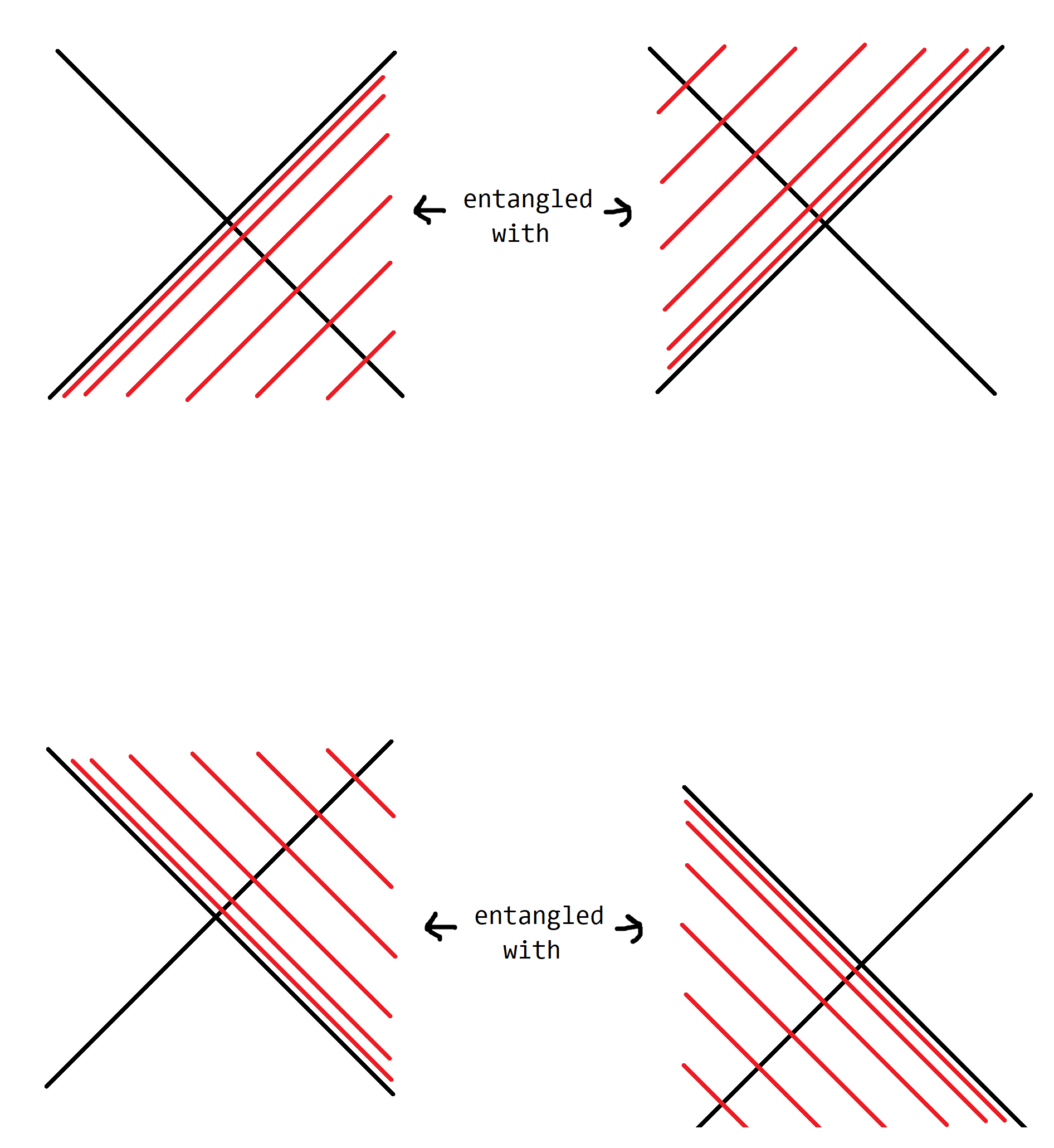In Hawking's famous paper "particle creation by black holes", he expands the real scalar field $\phi$ in two ways. I am confused why he makes the choice he does in the second way.
First in the distant past (before the star has collapsed), he expands the field in (2.3) as $$ \phi = \sum_{i} \big( f_i \mathbf{a}_{i} + f_i^{\ast} \mathbf{a}_{i}^{\dagger} \big) $$ for some mode functions $f_{i}$ and ladder operators $\mathbf{a}_{i}$.
In the second way, in the distant future (after the star has collapsed and so a black hole horizon has formed and so on), he expands the field in (2.4) as $$ \phi = \sum_{i} \big( p_i\mathbf{b}_{i}+p_i^{\ast}\mathbf{b}_{i}^{\dagger}+q_i\mathbf{c}_{i} + q_i^{\ast} \mathbf{c}_{i}^{\dagger} \big) $$ for some mode functions $p_{i}$, $q_{i}$ and ladder operators $\mathbf{b}_{i}$, $\mathbf{c}_{i}$.
My question boils down to: in the second expansion, why do we need two types of ladder operators $\mathbf{b}_{i}$ and $\mathbf{c}_{i}$? There seem to be two Fock spaces being referred to here?
In the text below (2.4) goes on to say that $p_i$ are mode functions which are purely outgoing (with zero Cauchy data on the event horizon), and $q_{i}$ are solutions which contain no outgoing component (with zero Cauchy data on $\mathscr{I}^{+}$, the distant future aka. future null infinity).
Why do the outgoing and incoming modes (at the horizon) seem to require separate Hilbert spaces? I do not understand this from Hawking's paper. Does the presence of the horizon split up your Hilbert space in a way analogous to how this happens in Rindler space (there, you need different ladder operators in the right and left Rindler wedges, and so this reminds me of this).

